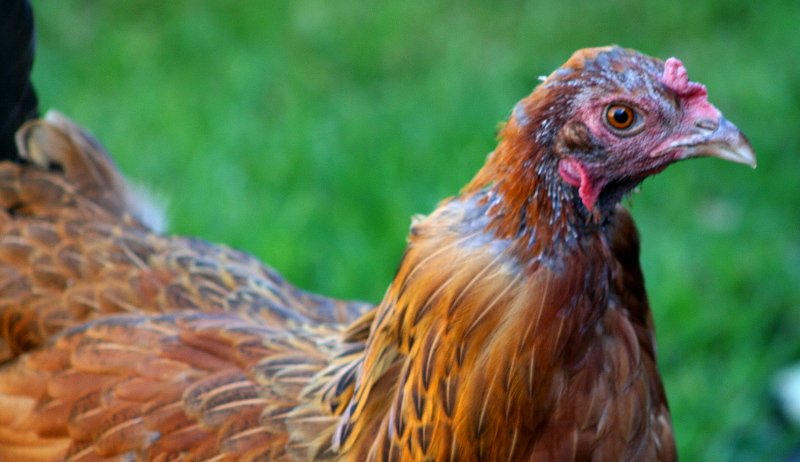
A flurry of fluffy white greeted me when I opened the Orpington coop this chilly October morning. It swirled around me, gently floating to the ground as the birds trooped past me to their run. Bianca Orpington’s emergence from the coop confirmed my suspicions: The autumn molt had begun.
Bianca might be the first in our flock to start losing her feathers, but she sure wouldn’t be the last. Over the next few weeks, our yard will be blanketed with cast-off feathers as the rest of our adult birds discard their old feathers and grow new ones to help keep themselves warm during the winter. A molting flock can be a frightful sight. The chickens look as though they’ve gone 10 rounds with a prizefighter wielding a chicken plucker. Those birds that are further into their molt often resemble porcupines as the new plumage comes in.
Molting is perfectly natural, however, and a normal part of a mature bird’s life cycle, occurring around late summer and early autumn. The molting process can be very uncomfortable for those birds experiencing a “hard” molt—in which a chicken loses all her feathers at once—vs. a “soft” molt—in which a bird loses her feathers and replaces them gradually. To ease your flock’s discomfort during this awkward time, follow these tips.
1. Avoid Handling Your Birds
While molting is not a painful process, it is a highly tender and irritating one. Imagine what your skin would feel like if, after being carefully protected, it were suddenly exposed to the elements. Then add the aggravation of hundreds of quills trying to push through your skin all at the same time. You sure wouldn’t want someone touching you, now would you? Save the cuddles and pats for when your favorite hen or roo has finished growing in all those feathers.

2. Increase Your Birds’ Protein Intake
Chicken feathers consist of almost 100 percent keratin, a fibrous protein found in animal hooves, bristles and horns. Regrowing a body’s worth of feathers requires an enormous amount of protein. Give your chickens nutrients to help them healthfully rebuild their feathers by adding a protein-based supplement such as Calf Manna to their diet. You can also temporarily switch their feed from layer rations to that specifically formulated for game birds or broilers, or one made for infant poultry.
3. Clear Away The Cast-Offs
Nutrient-hungry chickens, especially those hungry for protein, will pick and scratch at anything, including the discarded feathers that might blanket your run or yard. The last thing stressed birds should eat during this difficult time is anything microbe-laden, and shed feathers harbor a variety of microflora. Keep your flock from consuming cast-offs by raking them up and composting them as brown material. Discarded feathers can also be disposed of by burning.
4. Protect Your Molting Birds’ Backs

Bare backs and exposed shoulders are susceptible to sunburn, laceration and other injury. Help shield your birds’ skin from potential harm by covering it with a hen apron. Also known as a chicken saddle, a hen apron covers vulnerable skin with breathable material held in place with elastic straps. Once the new feathers have grown in, the apron can easily be removed. Patterns to make your own hen aprons can be found online, as can ready-made saddles.




